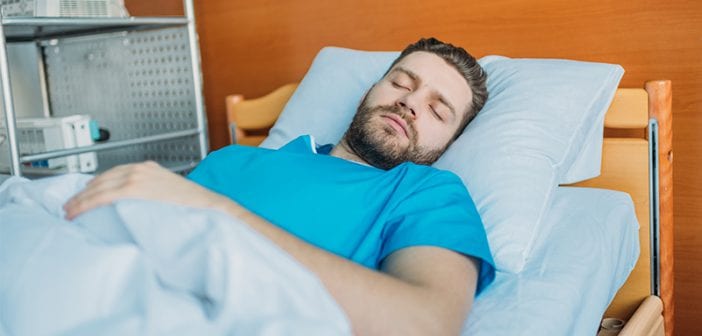Most people can imagine no more terrifying scenario than being trapped in their bodies, unable to move or communicate, but fully aware of everything that is happening around them. How would people treat you? Who would make life and death decisions about your care? For some people, this is not merely a terrifying hypothetical; this is real life. New research gives us incredible insights into their inner lives.
Dr. Adrian Owen, author of “Into the Gray Zone,” is a neuroscientist who used brain imaging technology to communicate with people thought to be in a “vegetative state.” In a video shared on Facebook by the group Freethink, Dr. Owen explains how he was able to communicate with people thought to be totally unaware and unresponsive.
When a certain part of the brain is activated, the brain cells burn glucose, which is replenished by increased blood flow. This increased blood flow can be seen on a functional magnetic resonance imaging (fMRI) scan of the patient’s brain. Using this information, Dr. Owen and his team were able to perform a very rudimentary form of “mind reading.”
Using healthy subjects and patients with brain injuries, researchers compared brain activity. First, they had people imagine playing tennis, which in almost all people activates the premotor cortex. Next, they had people imagine moving from room to room in their homes. This produces brain activity markedly different from imaging playing tennis, with significant blood flow to the parahippocampal gyrus and other parts of the brain.
Once these two very different patterns of brain activity are established, researchers can substitute one for “yes” and one for “no.” Patients were instructed to think of playing tennis if the answer to a question was “yes” and think of walking around their homes if the answer was “no.” The results were astonishing. Patients described as “vegetative” were able to respond to questions with “yes” or “no”, revealing a level of consciousness that people previously thought impossible.
Dr. Owen explains that 20%, or one in five, of the patients studied demonstrated the ability to respond to questions using this thought technique. He says, “They’re aware of the situation they’re in, they’re aware of conversations going on around them, they have thoughts, they have emotions, maybe even have feelings about their future, but is largely unable to move any part of their body.”
Dr. Owen describes the developing method of communication with brain-injured patients as a way of giving human dignity. He says, “Communication is the thing that really makes us human. If we can give these patients back the ability to make decisions, I think we can give them back a little piece of their humanity.” However, the brain-injured people never lost their human dignity and they remain fully human whether or not we treat them as such. The people for whom we care do not loose humanity; we degrade our own if we ignore or mistreat them. The study shows that at least one in five severely brain-injured patients are aware and responsive, but we are only just beginning to understand what is possible. Five out of five brain-injured patients deserves the Right to Life and respectful care.
This is not surprising to the many families who have helped a brain-injured family member. For example, the family of Terri Schiavo outspokenly fought for her Right to Life when the state of Florida allowed her to be starved and dehydrated to death in 2005. Terri Schiavo suffered a brain injury in 1990. She breathed on her own, appeared to respond to her parents, and was expected to live for many years. Nonetheless, her estranged husband fought to withhold basic sustenance. After 14 days without nutrition and hydration, Terri died.
Terri’s parents, Bob and Mary Schindler, together with Terri’s brother, Bobby, and sister, Suzanne, have worked tirelessly to preserve her legacy. The injustice and inhumanity of Terri’s imposed death inspired the grieving family to found the Terri Schiavo Life & Hope Network. The Life & Hope Network offers families with a medically vulnerable loved one a 24/7 hotline for assistance in fighting denial of treatment. Through this hotline, the group has assisted thousands of patients. The Life & Hope Network also works through advocacy on legislation including: the right to food and water, the presumption of the will to live, due process against denial of care, protection from euthanasia as a form of medicine, and access to rehabilitative care.
What Dr. Owen’s astonishing research shows, Pro-Life advocates already know: disabled patients are still fully human and deserving of nutrition and hydration, ongoing care, and the Right to Life. Dr. Owen’s innovative process of communication may help patients receive the care they need and deserve.

